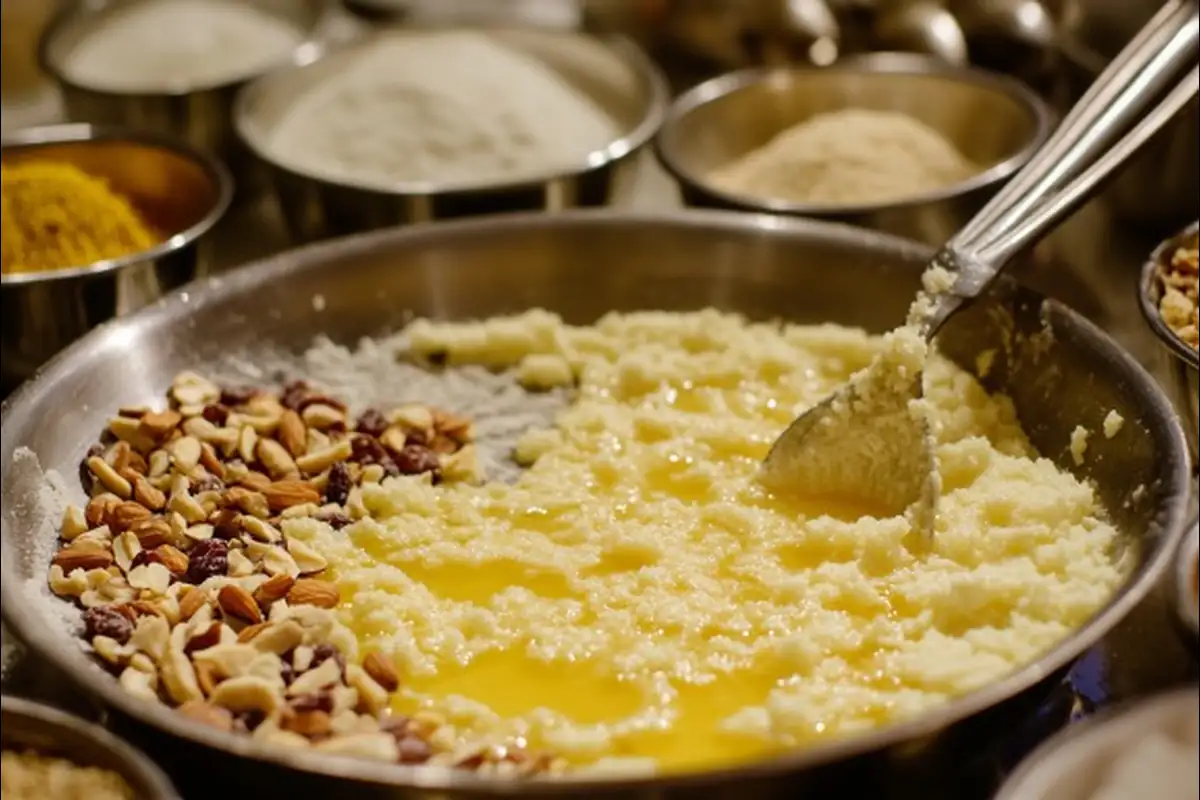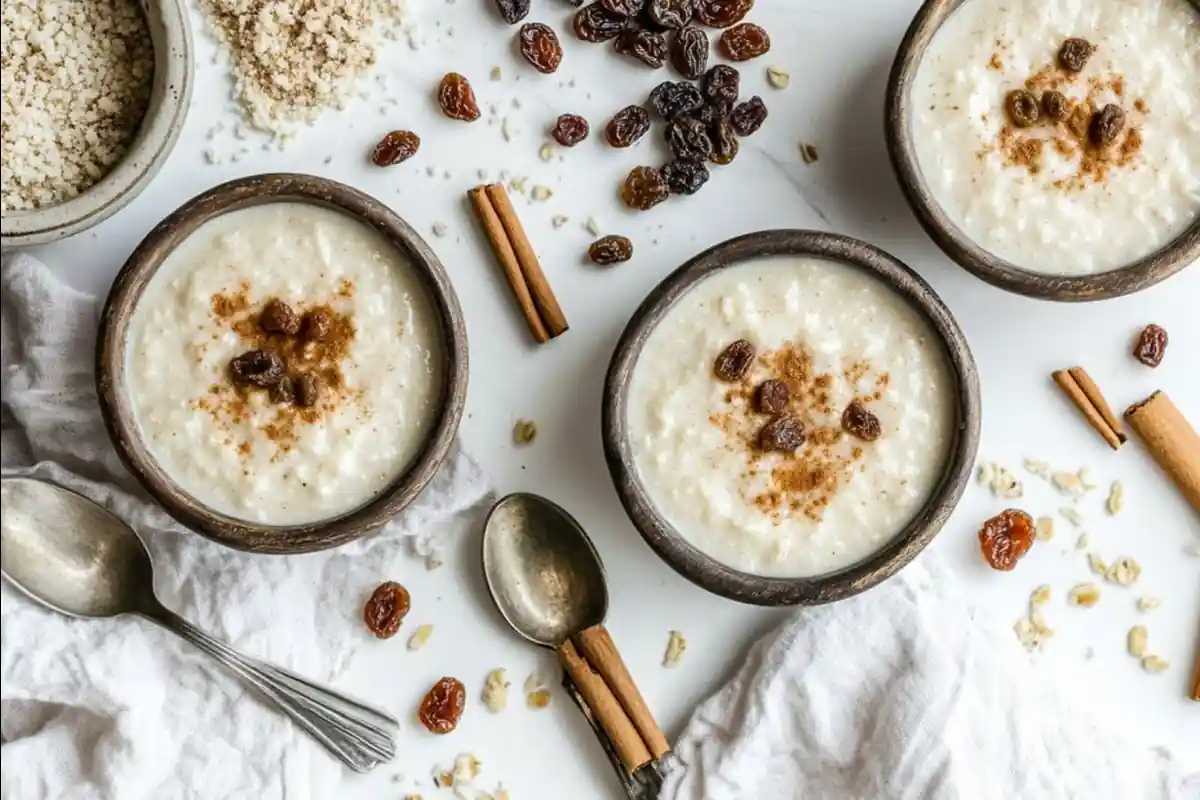What is the Difference Between Parsad and Sirnee?
Food has always been more than just sustenance; it’s a reflection of culture, tradition, and faith. But what is the difference between Parsad and Sirnee? In South Asian and Caribbean communities, these two iconic dishes hold deep religious and cultural significance, each offering unique flavors and traditions. While both are sweet treats often prepared for special occasions, they have distinct characteristics that make them unique. This article explores their origins, preparation methods, cultural relevance, and the subtle yet meaningful differences that set them apart.
1: Introduction to Parsad and Sirnee
Overview of Parsad and Sirnee
Parsad and Sirnee are revered in many Hindu, Muslim, and Guyanese communities, symbolizing purity, devotion, and gratitude. They are typically offered during religious ceremonies, festivals, or community gatherings. Both desserts reflect centuries of culinary tradition, bridging the gap between culture and faith.
Parsad is a rich, sweet offering made primarily of wheat flour, ghee, and sugar, often embellished with nuts and raisins. On the other hand, Sirnee is a Guyanese delicacy made with flour, butter, milk, and sugar, carrying subtle yet delightful hints of spices like nutmeg and cinnamon.
Cultural Significance in Religious and Traditional Ceremonies
In Hinduism, Parsad is often prepared as a sacred offering (prasad) during pujas or havans. Its preparation is steeped in ritualistic practices, emphasizing cleanliness and devotion. Similarly, Sirnee is central to Muslim and Guyanese celebrations, especially during the Eid holidays or special prayers.
Deities or ancestors inspire gratitude through both dishes, which families, friends, and communities share with one another. People also celebrate these treats beyond religious contexts as culinary masterpieces, passing them down lovingly through generations.
Why Understanding the Difference Matters
Although they share common themes of spirituality and tradition, understanding what is the difference between Parsad and Sirnee deepens our appreciation of their individual charm. This knowledge not only honors their cultural roots but also inspires us to preserve their legacy in modern kitchens.
2: What is Parsad?
Origin and History of Parsad
Parsad is a beloved dish with deep roots in Indian culture and Hindu religious practices. It has traveled across the globe, finding a special place in Caribbean traditions, especially in Guyana and Trinidad. Originally prepared as an offering during Hindu pujas, Parsad symbolizes blessings and the divine connection between humans and deities.
This dessert has also evolved, adapting to local ingredients and tastes in the diaspora. In Guyana, Parsad is more than just a dish; it’s a bridge to cultural identity, cherished during religious festivals and family events.
Ingredients and Preparation of Parsad

Parsad is made with a handful of simple ingredients: wheat flour, ghee (clarified butter), sugar, and water or milk. Many recipes also include raisins, cardamom, and nuts for added texture and flavor. The key to its unique taste lies in roasting the flour in ghee until it develops a nutty aroma, then combining it with the sweetened liquid to create a rich, smooth consistency.
If you’re curious about a detailed recipe, check out the traditional Parsad recipe on WedoRecipes for step-by-step guidance.
Variants of Parsad Across Different Cultures
The basic recipe for Parsad has many regional variations. In some cultures, semolina or cream of wheat replaces flour, resulting in a lighter texture. Other versions incorporate coconut milk for a tropical twist or saffron for a luxurious flavor. These variations reflect the adaptability of Parsad while maintaining its spiritual essence.
3: What is Sirnee?
The History and Origins of Sirnee
Guyanese Muslims prominently associate Sirnee, a sweet dish, with Eid celebrations. Indian indentured laborers brought their culinary traditions to Guyana, which shaped the history of this dessert. Over time, Sirnee became a staple dessert during religious and festive gatherings, symbolizing unity and joy.
Key Ingredients and Method of Preparation

Sirnee is prepared using flour, butter, milk, sugar, and spices such as nutmeg and cinnamon. Unlike Parsad, Sirnee has a softer, more pudding-like texture. The preparation involves mixing flour and butter to form a roux, gradually adding milk and sugar to create a creamy consistency. Spices and dried fruits are often added for flavor.
Cultural Variations in Sirnee Recipes
Different communities have their unique twists on Sirnee. While the Guyanese version is enriched with spices, some recipes from Trinidad include grated coconut or condensed milk for extra sweetness. Despite these differences, the dish remains a symbol of hospitality and celebration.
4: Key Differences Between Parsad and Sirnee
Texture and Appearance Differences
One of the most noticeable differences between Parsad and Sirnee is their texture and appearance. Parsad tends to have a dense, grainy consistency that holds its shape when served. Its golden-brown hue, enhanced by roasted flour or semolina, makes it visually distinct. On the other hand, Sirnee boasts a creamy, pudding-like texture with a lighter, more delicate look, often accentuated with hints of spice and garnishes like raisins.
These contrasting textures not only influence their presentation but also their culinary experience. While Parsad offers a rich, buttery bite, Sirnee delivers a smooth, melt-in-your-mouth indulgence.
Differences in Ingredients and Cooking Techniques
The ingredients and preparation methods further distinguish these two dishes. While both use flour and butter as primary components, Parsad relies heavily on ghee, wheat flour, and a balance of sugar and water or milk for its signature taste. The flour is carefully roasted to achieve a nutty aroma, forming the base of the dessert.
Conversely, Sirnee incorporates flour, milk, sugar, and spices like nutmeg and cinnamon, creating a more fragrant and spiced flavor profile. The milk contributes to its creamy consistency, while spices elevate its taste. The preparation technique involves forming a roux, followed by gradual cooking, giving it a smoother finish compared to Parsad.
Regional and Cultural Preferences
The geographical roots of Parsad and Sirnee influence their traditional preparation and consumption. Indians originally created Parsad and closely associate it with Hindu ceremonies. In contrast, Guyanese Muslims celebrate Sirnee as a staple dessert, especially during Eid. These dishes reflect the culinary diversity and cultural adaptations that occurred as Indian traditions merged with Caribbean influences.
In modern times, families might adapt these recipes to suit their tastes, adding unique ingredients like coconut milk to Sirnee or saffron to Parsad, highlighting how these desserts continue to evolve.
Symbolism and Use in Festivities
Both desserts carry profound cultural and religious significance, yet they are used in distinct contexts. Parsad is a sacred offering during Hindu pujas and religious ceremonies, symbolizing blessings and the divine. On the other hand, Sirnee is served during Muslim celebrations, symbolizing togetherness and joy.
While they share a role in marking important occasions, the differing symbolism and occasions of use deepen our understanding of what is the difference between Parsad and Sirnee. This distinction enriches their cultural value and preserves their importance in diverse traditions.
5: Similarities Between Parsad and Sirnee
Shared Ingredients and Preparation Basics
Despite their differences, Parsad and Sirnee share several similarities, especially in their base ingredients. Flour, butter, sugar, and milk form the foundation of both dishes. These simple yet versatile ingredients allow for endless variations, reflecting the adaptability of both desserts.
The preparation process also emphasizes care and precision. Both require controlled heat and constant stirring to achieve the desired consistency, showcasing the skill involved in crafting these traditional treats.
Common Religious and Ceremonial Usage
Another shared characteristic is their use in religious and ceremonial contexts. Whether it’s Parsad in a Hindu puja or Sirnee during an Eid gathering, these desserts act as symbols of faith, gratitude, and celebration. They’re not just food but an integral part of spiritual practices that bring people together.
Global Adaptations of Both Dishes
Both desserts have traveled beyond their origins, with variations appearing in global communities. Indian and Guyanese diaspora populations have incorporated local ingredients, giving these dishes a unique twist while maintaining their essence. From saffron-laced Parsad to coconut-enriched Sirnee, these adaptations showcase their versatility and enduring popularity.
If you’re curious about trying one of these desserts, consider starting with the traditional Parsad recipe on WedoRecipes.
6: Health and Nutritional Perspectives of Parsad and Sirnee
Nutritional Breakdown of Parsad
Parsad is rich in carbohydrates, fats, and sugars, making it an energy-dense dish. The main ingredients, like wheat flour, ghee, and sugar, contribute to its high calorie content. Traditionally, people do not consume Parsad for its health benefits, but they can modify it to suit healthier lifestyles. For instance, substituting refined sugar with honey or jaggery and using whole wheat flour can enhance its nutritional profile.
Nutritional Profile of Sirnee
Sirnee, with its creamy texture and milder sweetness, offers a slightly lighter alternative to Parsad. Its base ingredients—flour, milk, and butter—provide calcium and some protein. Spices like cinnamon and nutmeg not only enhance the flavor but also add a touch of antioxidants. To make Sirnee healthier, you can use low-fat milk or plant-based alternatives and reduce the sugar.
Comparing Health Aspects: What is the Difference Between Parsad and Sirnee?
When comparing the two, the primary nutritional difference lies in their fat and sugar content. Parsad, with its heavy use of ghee, tends to have a higher fat content, while Sirnee is relatively lower in fats but higher in dairy-based nutrients. For those looking to enjoy these desserts in moderation, both can be part of a balanced diet with mindful portion sizes.
7: Modern-Day Significance and Global Influence
Parsad and Sirnee in Contemporary Celebrations
Even today, Parsad and Sirnee remain integral to cultural celebrations, connecting families and communities across generations. Their presence at religious and social events is a testament to their enduring importance. Modern adaptations have allowed these dishes to stay relevant, with innovative twists such as vegan Parsad or spiced-up Sirnee.
Global Recognition and Culinary Influence
As Indian and Caribbean communities have spread worldwide, so have these iconic dishes. Restaurants and food festivals now feature Parsad and Sirnee, introducing them to new audiences. These desserts not only reflect the rich culinary traditions of their origins but also resonate with the global appetite for diverse and meaningful foods.
Why Knowing What is the Difference Between Parsad and Sirnee Matters
Understanding the difference between Parsad and Sirnee goes beyond their recipes. It’s about appreciating the cultural contexts that shape them and the unique ways they bring people together. Both dishes showcase how food transcends borders, evolving while retaining its essence.
8: FAQs on Parsad and Sirnee
What is Guyanese Sirnee?
Guyanese Sirnee is a creamy, spiced dessert deeply rooted in the culinary traditions of Guyanese Muslim communities. Guyanese families often prepare Sirnee during festive celebrations like Eid, using simple ingredients such as flour, milk, butter, and sugar, along with warming spices like cinnamon and nutmeg. Unlike Parsad, Sirnee has a smoother texture and a pudding-like consistency.
What is Seerni?
Seerni, another name used for Sirnee in some regions, refers to the same delectable dessert often associated with religious occasions. The preparation and symbolism of Seerni align closely with Sirnee, emphasizing its role in bringing families and communities together.
What is Sirni Made Of?
Sirni typically consists of flour, butter, milk, sugar, and spices. The slow cooking process creates its creamy texture, blending the ingredients into a fragrant and flavorful dessert. Cooks often add raisins or other dried fruits to enhance texture and sweetness.
What is Guyana’s Native Dish?
While Sirnee is a beloved dessert, Guyana’s native cuisine features a variety of dishes, including pepperpot, cook-up rice, and roti. These meals reflect the country’s diverse cultural influences.
9: Conclusion: Parsad and Sirnee in Modern Times
The Evolving Role of Parsad and Sirnee in Today’s Society
In today’s fast-paced world, traditional dishes like Parsad and Sirnee continue to hold their cultural significance while adapting to modern lifestyles. Home cooks experiment with healthier ingredients, such as substituting ghee with plant-based butter or reducing sugar, making these desserts more accessible to different diets.
Preserving Tradition While Embracing Innovation
Although the question What is the difference between Parsad and Sirnee? highlights their unique features, both desserts share a timeless appeal. They connect people to their heritage and foster a sense of community during special occasions. Modern adaptations, like adding unique flavors or simplifying recipes, ensure their preservation for future generations.
Whether you’re celebrating a Hindu puja with Parsad or sharing Sirnee during Eid, these desserts remind us of the power of food to bring people together.


2 thoughts on “What is the Difference Between Parsad and Sirnee? A Sweet Comparison”